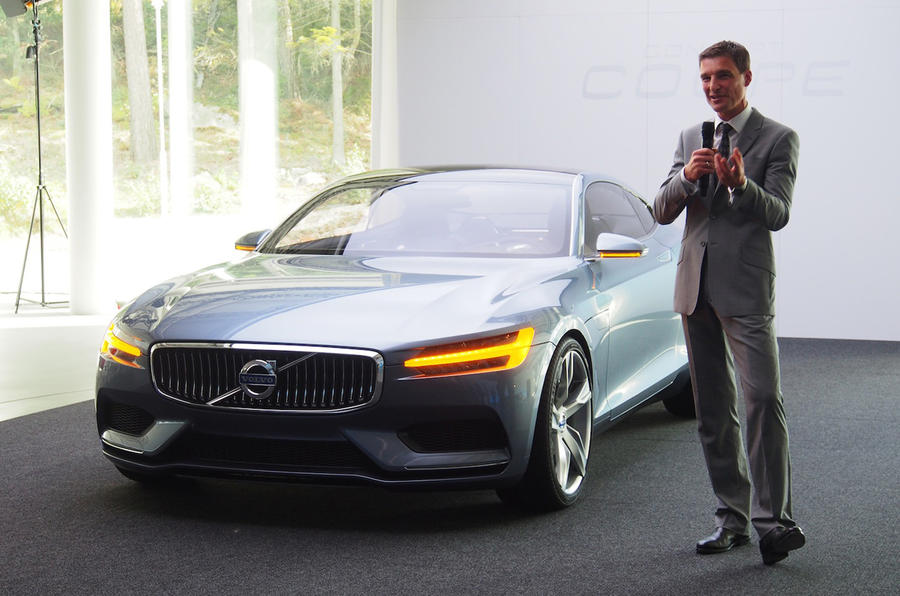Thomas Ingenlath is probably the most talented and influential car designer you’ve never heard of. Yesterday, making his first public appearance as the head of design at Volvo, he also unleashed a brilliant – if politely delivered – broadside against the prevailing Germanic view of luxury and premium design language in the global car industry.
Ingenlath and his team (including interior designer Robin Page, recently recruited from Bentley) rolled out the Volvo Concept Coupe, a clear signal as to the shape of future Volvos.
Within a few seconds of Ingenlath unveiling the Concept Coupe at Volvo’s studios, the penny dropped: this was classic Ingenlath. Beautifully measured, with big, sophisticated surfaces and restrained and super-tight detailing. A few murmurs about the Audi A5 ran among the gathering. Indeed, maybe this is what the A5 might have looked like if Audi had not cleared out the thinkers behind the ’97 A6 and TT?
I got to know Thomas a little back in 1990-91, when he was a car design post-graduate student at the Royal College of Art. I used to visit friends at the RCA studios and was in awe of Ingenlath’s student work. Sponsored by Audi, he was clearly a rare, possibly even generational, talent.
Ingenlath disappeared into the bowels of Audi in late 1991 until 1994 and was rarely seen in public. But I’m pretty sure Ingenlath was one of the prime movers in the work that resulted in the 1997 Audi A6 and the original TT. He was at VW from 1995 until 2000. His 1995 VW Noah concept MPV – noted for its teak decking floor – was a seminal example of the era’s super-clean, Bauhausian, styling.
Ingenlath was the design boss at Skoda between 2000 and 2006, which was last time I saw him, when he was presenting the Skoda Superb. Between 2006 and last year, Ingenlath ran VW’s Potsdam studio, which both works on both advanced design and competes against other brand design studios internally at VW Group.
In Ingenlath’s somewhat sparse office at Volvo’s design studios, he has a large model of the radical VW XL1 on the shelves behind his desk. I asked Thomas about the model and he admitted that he was ‘proud’ to have worked on the car. I should have guessed. The XL1 has all the hallmarks of the pre-big grille Audis: clean, beautifully measured and beautifully detailed.








Join the debate
Add your comment
Change the record
About time we had something other than tedious German brands. Unfortunately I think Autocar is 100% addicted to them, that and Land Rover
interesting
I made a comment about swedish design while comparing a swedish chisel to swedish clean cut minimalist design, and i am glad this chap has pointed it out....sort of. looks like volvo will have an interesting time ahead of herself. just pleased to know at least one designer or 2 notably Ian Callum that ugly cars is not the way forward. that's Jag and Volvo sorted lets hope someone can help out Saab.
artill - good comment on Kia
If Ingenlath can help Volvo make the design progress seen at Kia since Schreyer's arrival, it would be a great achievement.
The excessive fussiness & exaggerated features of much car design today is depressing. The Germans aren't the only car makers doing it - see also Peugeot, the Japanese and some of the Americans. The sooner there is a return to shapes and proportion rather than fiddly details, the better, and I can't wait to see the death of the giant radiator grille.
In my opinion another manufacturer (other than Kia) that has successfully resisted the baubles and trinkets trend is Alfa.
This Coupe Concept looks great - I hope the grille grows no further. Also the XC90 teasers show way too much LED excitement at the front - please limit illumination to the headlamps.